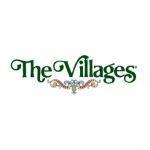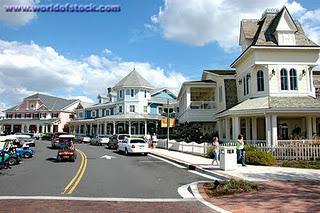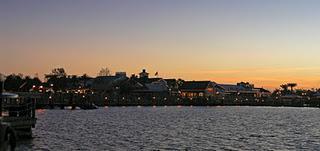 Ilooked out through the large bus windows at the rolling central Florida hills. Thelate morning sunlight was muted by the tinted glass, and the countryside appearedas a contrast of straw-colored grass and subtropical evergreen. It had been adrought-stricken winter, the end of the dry season, and even the dark murky lakes andponds that dotted the landscape lookeddrained and shrunken. The bus was heading north from Orlando on the FloridaTurnpike. In years past this ground was cultivated with orange groves, but toofrequent winter frosts and freezes drove the orange growers south. Now ranchingdominates and open, empty fields carry on along therolling ground as far as the eye can follow . This part of the Sunshine State seems far removed from thepalm-laden glitz and built-up densities of Miami and “South Florida,” orcertainly the sprawling fantasy production of Disney World and the rest ofOrlando’s tourist-entertainment parks. But it’s in this quiet corner of Floridawhere you will find one of the fastest growing communities in the UnitedStates, The Villages. That’s where my charter bus, one of many on the daily round-tripshuttle service to and from Orlando, was taking me.
Ilooked out through the large bus windows at the rolling central Florida hills. Thelate morning sunlight was muted by the tinted glass, and the countryside appearedas a contrast of straw-colored grass and subtropical evergreen. It had been adrought-stricken winter, the end of the dry season, and even the dark murky lakes andponds that dotted the landscape lookeddrained and shrunken. The bus was heading north from Orlando on the FloridaTurnpike. In years past this ground was cultivated with orange groves, but toofrequent winter frosts and freezes drove the orange growers south. Now ranchingdominates and open, empty fields carry on along therolling ground as far as the eye can follow . This part of the Sunshine State seems far removed from thepalm-laden glitz and built-up densities of Miami and “South Florida,” orcertainly the sprawling fantasy production of Disney World and the rest ofOrlando’s tourist-entertainment parks. But it’s in this quiet corner of Floridawhere you will find one of the fastest growing communities in the UnitedStates, The Villages. That’s where my charter bus, one of many on the daily round-tripshuttle service to and from Orlando, was taking me.TheVillages is the brainchild of developer H. Gary Morse, who in the mid-1980s sawan opportunity to transform a struggling trailer park into a vast new development.Florida has long been famous as a Mecca for retirees, the “snowbirds” looking toescape the frigid winters of the Northeast and Midwest, and Morse carried thisreality to a new conclusion: He wouldn’t build a retirement center, orneighborhood, but an entire town. Large tracks of northeast Sumter County (andsmaller portions of adjacent Marion and Lake Counties) were bought, and overthe last two plus decades, transformed into a new, wildly successful community.The population of The Villages, including part-time residents, is over 80,000 witha planned ultimate population of more than 100,000. With vast numbers of baby-boomersstarting to retire, the U.S. might see a proliferation in these types ofmaster-planned retirement towns, and I wanted to get a firsthand look at this potential future.
Entering The Villages
Mybus, which I was glad was well less than half full, exited the Turnpike onto US 301. Therefollowed a slow ten minute ride, which went through the sad-looking town ofWildwood. We passed tiny dilapidated bungalows, tired storefronts, and thatgeneral haphazard, disorderly look of neglected landscaping and forgottenmaintenance. The impression is unmistakably one of the languishing rural South.What a contrast when a few minutes later and couple miles down the road we turnedonto Buena Vista Boulevard and entered The Villages. We passed thousands of trimbright new houses. The white and cream facades accented with a mix of shingled gray,brown, and burnt orange roofs. Many houses feature patios and pools (allenclosed by lanai). We drove past several bright green golf courses; there arenearly 40 in the town all told, including nine 18- or 27-hole country clubcourses. There was also the exquisitely manicured landscaping: Large oak treesadorned with Spanish moss; palmettos lining golf courses; bushes shieldingroadside houses; blooming flowers of pink, red, yellow, violet, and indigo brighteningthe roadside; and the thick, uniformly trimmed and edged carpet of grass. It was all wonderfullyarranged and effectively used to delineate neighborhoods and break-up theviews. Intersections occurred at roundabouts, not a traffic signal to be seen. Buena Vista Boulevard, like all major roads in The Villages,is flanked by paved cart paths. Perhaps the most distinctive feature of thetown is the ubiquitous use of golf carts to get around – everywhere a residentwould want to go – and today, Saturday, the carts were out in force.

Lake Sumter Landing
Thebus stopped in Lake Sumter Landing, one of two town centers, which featuresseveral streets of pastel colored shops and restaurants radiatingfrom a central square. I stepped off the bus into the sunny warm April day and wasgreeted by my hosts – my parents, part-time residents. The architecture andlayout is all set-up following that Florida specialty, the theme, this being theOld South (e.g. a wooden bridge over a small canal, complete with a fake lock and waterwheel). The adjacent square (surrounded by buildings with a southern town façade)was busy as residents and their guests (like me) surveyed the offerings of localvendors; art and personal accessories mostly, and a regular daytime activity. Thenorth side of the square is open and leads to Lake Sumter, right in the centerof The Villages. The lake is fronted by houses on either side ofthe town center. This is apparently some of the choicest and priciest real estatein the whole town.Wewalked to a close-by restaurant for lunch and the sidewalks and stores were noless busy. I was somewhat surprised by the composition of the crowds. Whilethere was a surfeit of older people, there were also a lot of families. I hadin mind a scene of senescent retirees, slow moving, quiescent. But the hustle Iencountered was just like your local outdoor mall, not the exhausted idlenessof a retirement home. I was skeptical when my parents told me they were buyinga house in The Villages. I feared they were adopting a mentality and lifestyleolder than their years. But on first exposure, my fears were somewhat allayed.There was vibrancy here, not certainly for a young person, but at least I couldsense the appeal.
After lunch, I got a tour (the first of many) of my parents’neighborhood and nearby facilities. The Villages is so labeled because it’ssubdivided into “villages.” Lynnhaven, Ashland, Largo, Hadley, Palo Alto, andAlhambra to name a handful (there’s over 60). A visitor can access the towncenters and drive the major boulevards, but each neighborhood is gated. TheVillages is inviting, but not open. In general each village includes severalstreets laid out in curvilinear alignments (and with dedicated cart lanes), with closely-spaced houses. Palmtrees predominate, with palmettos, queen palms, and date trees in abundance. Nodoubt these trees are heavily planted because they’re attractive, but also toremind residents and visitors that The Villages is a place of warmth andwinter-free living. Ironically, the previous February was abnormally cold andthe fronds of many of the less hardy trees were brown, damaged by repeatedexposure to freezing temperatures. Central Florida is usually mild in winter,but cold does happen.
A Very Brief Overview

Gold carts parked en mass a Spanish Springs
Butto give you a birds-eye overview, geographically The Villages resembles alarge rectangle, with boundaries roughlydelineated by state route (SR) 42 on the north, SR 466A on the south, US 301 onthe west, and US 27 on the east. In total, an area of roughly 35 square miles(not much smaller than San Francisco). There are two town centers, Lake SumterLanding, near the geographic center, and Spanish Springs (Spanish-Americathemed) near the northwest corner. Then there are numerous regional centers (alsovariously themed – nautical, tropical, etc.) that include large theaters/halls,meeting rooms, small gyms, business centers, etc. In each village there are neighborhoodrecreational centers, with family pools, tennis courts, meeting rooms, and soon. Finally, there are neighborhood pools (heated for year-round use), whichalso feature bocce ball pitches and shuffle board. By my observation the poolswere heavily-used, but surprisingly no one was playing bocce ball or shuffleboard, which didn’t jive with my thinking of what these old people would prefer.There’s also the aforementioned abundance of golf courses, as well as parks, softballcomplexes, a polo stadium and equestrian facilities, an archery range, a croquet and lawn bowling center,and walking trails. There are several lakes, but there are largely off limitsbecause they’re swampy like in the rest of Florida and infested with alligators, someof which are apparently man-endangeringly large.AsI was shown one of the regional recreation centers, I picked up a weeklynewspaper that included a listing of all activities. In addition to shows and other weekly and specialty entertainment featured in the regional centers, there are a lot of ways to keep busy, pages andpages and pages worth. There are clubs or groups for a tremendous range of interests. A small sampling:languages, political interests, cycling, model sailboat racing, books, tennis, ethnic/culturalaffinities, food, movies, line dancing, etc., ad seemingly infinitum. If youhave an interest in something, you can probably find a group or club. It’s allcentered on leisure. People who live in The Villages don’t get up andgo to work, so their time has to be filled in other ways. I’ve heard retireesclaim that finding ways to spend their newly free time is a challenge. If you're a joiner (and we all aren't joiners, my mom is much more of one than my dad), filling time at TheVillages is easy.

Lake Sumter Landing along Lake Sumter
Wewent back to Lake Sumter Landing in the evening. The sun was setting, but itwas still balmy and the crowd was still large. Hundreds of golf carts wereparked along the streets (golf carts are given preferential standing vis-à-vis cars).Music was emanating from the square. Hundreds of people were sitting incomfortable-looking wooden folding chairs along the perimeter of the square.Apparently, these are setup every night for live music. On this night we onlylingered for a few minutes, the music (a light jazz ensemble) was not to mytaste, plus we were hungry. But on other nights apparently the bands or DJs areable to stir the crowd into a frenzy including embarrassing/comical/out-of-stepmass line dances, of which my mother is a frequent happy participant.Criticisms
Sois everything about The Villages a great plus? Well there have been criticismsof the political structure. The Villages is largely controlled by the group H.Gary Morse led, and residents have little say in current or future development.Further, there are stringent rules in place to ensure the clean, uniform,attractive look of the houses and public spaces. Residents cannot do what theyplease with their houses, although to a greater or lesser extent, that’s truein most places. Overall, the average resident may have less say in the workingof The Villages than may be desired, but is this a major concern? I had achance to speak with several residents, my parents included, and none raisedthe issue of how The Villages were run, how services were provided, what amenitieswere available. Things aren’t necessarily cheap, but an advantage of beinglocated in a rural section of Florida is fairly low housing costs, which offsethomeowner’s fees.
However,a retirement community populated with thousands of aging adults needs extensivehealth care services, especially nursing care. These services are available inThe Villages, but they are not cheap, forcing many residents to search foroptions in nearby towns. A friend of my parents had to do just that, finding anursing home for her ailing husband. This offsite care might be cheaper, but it’salso of varying quality.
ButThe Villages is also good for the overall local economy. Local residents, manyof them younger adults, staff the stores and restaurants, and carryout the maintenance,landscaping, and other routine services. The Villages are ringed by stripmalls, most accessible by specially built golf cart tunnels and bridges. It’sdoubtful these would exist without The Villages. Local merchants benefit from providing allthe things people need: banks, medical services, auto-repair, restaurants,grocery stores, etc. Might all of this part of Florida look like Wildwood, absent the money being pumped into the economy because of The Villages? I doubt you’ll find too manylocals decrying the influx of these retirees. A fringe benefit of working in TheVillages is free access for employee children to The Villages K-12 school,which from the outside looks like an exclusive and expensive boarding school,including A+ sports facilities. I can’t speak to the quality of theeducation.
A State of Mind
TheVillages is an oasis for retirees, both in its physical reality as a beautiful,maintained, and amenity-laden town, and as a state-of-mind. As I look through theeyes of my parents, I understand the appeal. Retirement is a time to enjoy thefruits of a lifetime of labor. But it’s also, unfortunately, a bit of a race.When we get older we only have so much time, of health, of mobility, of mentalenergy, and let’s face it, of life. Thattime must be valued and for certain people, a lot of people, the lifestyle offeredat The Villages is the way to do that. The nature of retirement might change inthe coming years (retirement age, government benefits, etc.), but hopefully a longer-livingand healthier population will get to enjoyretirement. I can see that’s what’s happening in The Villages, and perhaps asdemography suggests, what will happen in other similar places. The Villages isa new type of town, and it just might be the right model for future projects.

